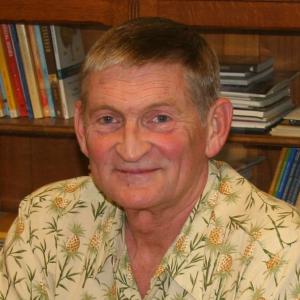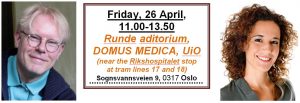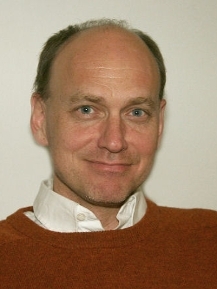| Event Start Date: 16. December 2019 | Event End Date: 16. December 2019 | Event Venue: |
Public lecture: “Single neuron studies of memories and volitions in the human brain” – by Professor Itzhak Fried.
***
Forum for Consciousness Research and The Norwegian Science Academy invites to a meeting and lecture with the renowned neurosurgeon Itzhak Fried, who is famous for, among other, concept cells, which are neurons that respond to specific concepts, such as Jennifer Anniston!
***
Programme:
17.30: Welcome and introduction by Johan F. Storm, Neurophysiology, University of Oslo
17.35: Itzhak Fried: “Single neuron studies of memories and volitions in the human brain”
18.35: Coffee break
18.45-19.15: Discussion and questions from the audience
***
The ultimate goal of neuroscience is to understand mechanisms of the human brain, including the electrical activity of single brain cells, which for ethical reasons can normally only be studied in animals. Dr. Fried has pioneered the use of invasive brain recordings in patients during various clinical procedures, thus providing a unique access to high-resolution brain signals from humans. Of special value are his rare recordings, in awake humans, of single brain cell activity, providing a unique view of aspects of cognition that are impossible to study in animals, such as imagery, language, and consciousness. In his lecture, Fried will discuss the unique contribution of invasive recordings from patients to cognitive neuroscience, focusing on memory, volition, and consciousness. Humans seem to decide for themselves what to do and when. Studying such volitional acts is a major challenge for neuroscience. Fried will discuss key mechanisms in the generation of voluntary actions: their apparent spontaneity and link to conscious experience, describing patient studies of the cortical basis of conscious volition down to the single-neuron level, the goal-directedness of voluntary action, and how internal generation of action can be linked to goals and reasons.
***
Dr. Itzhak Fried is Professor of Neurosurgery and Psychiatry & Biobehavioral Sciences at UCLA. He is Director of the Adult Epilepsy Surgery Program there, and Co-Director of the Seizure Disorder Center. Concurrently, he is a Professor of Neurosurgery at Tel-Aviv University in Israel. After a degree in physics at Tel-Aviv University, Dr. Fried completed his Ph.D. at UCLA, and a medical degree at Stanford and neurosurgery training, specializing in epilepsy surgery, at Yale University. He heads the Cognitive Neurophysiology Laboratory, which is centered on the opportunities to study the human brain afforded by the epilepsy surgery. Some of these patients have depth electrodes to evaluate their seizures for subsequent surgery, and used to record single neuron responses during cognitive tasks, including visual perception, memory, navigation, and imagery.
Lab website: www.itzhakfried.com
Key references:
1. I. Fried et al. (2014) Single Neuron Studies in the
Human Brain, MIT press.
2. Mukamel R, Fried I (2012) Human intracranial recordings and
cognitive neuroscience. Annu Rev Psychol. 63:511-37.
3. Fried I et al. (2017) Volition and Action in the Human Brain:
Processes, Pathologies, and Reasons J Neurosci.37:10842-10847.





